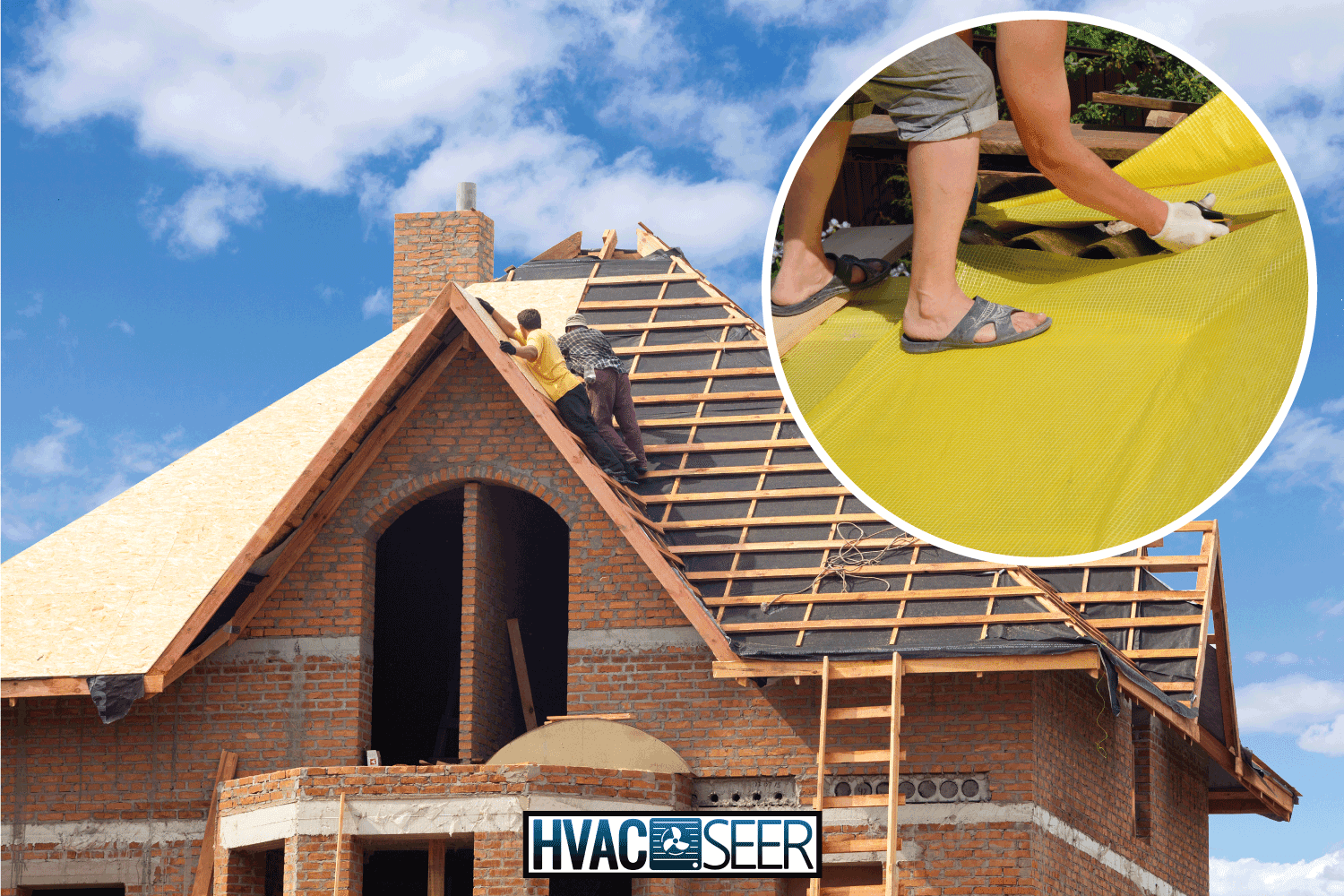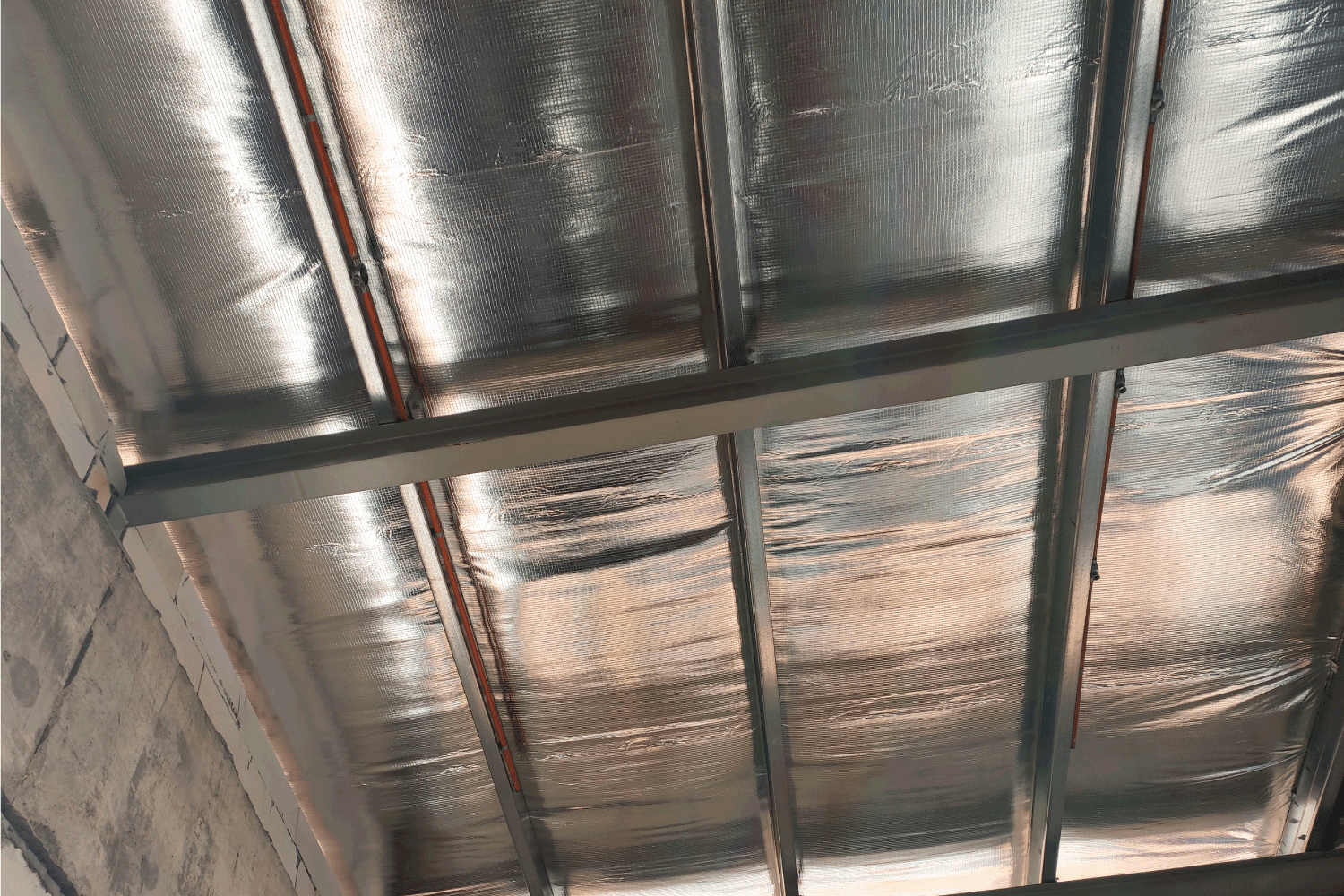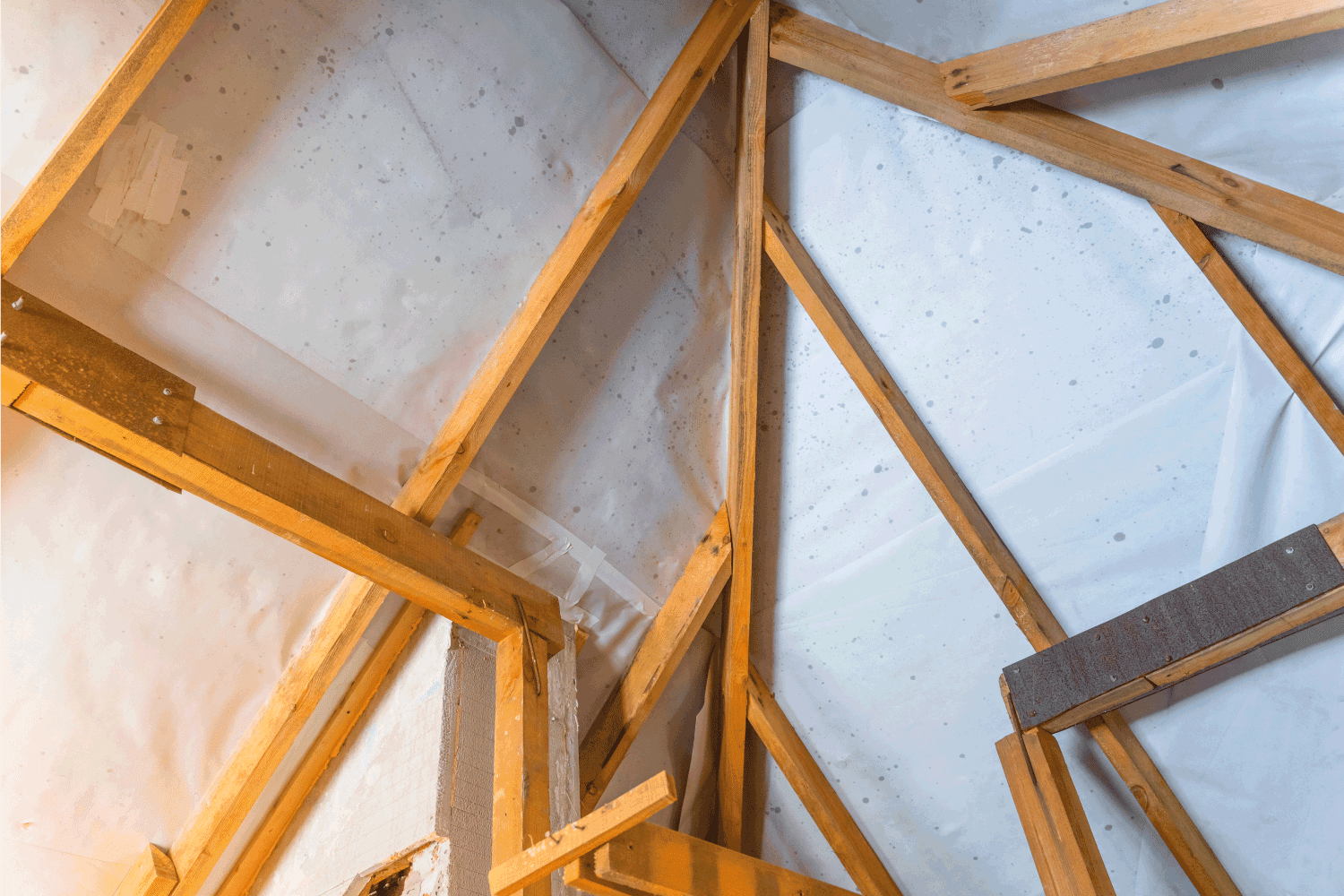If you're planning to have a roof insulation project, whether it's for extension, conversion, new construction, or just maintenance, you'll need to decide whether you want a cold roof or a warm roof. And if you go for a warm roof, do you think it still needs ventilation? We got you if you don't know the answer to that question! We have conducted thorough research to help you out.
A warm roof's reason for existence is to stop moisture from forming on the cold roof surfaces So, it means that warm roofs do not typically need ventilation. However, depending on the detailing, you should incorporate an air and vapor control layer (AVCL) or vapor barrier on the warm side of the insulation.
If you want to know more about warm roofs and their difference from cold roofs, we suggest you keep reading. Doing so will also help you answer some of the additional questions running through your mind.

What Is A Warm Roof?
If the position of the insulation is nearly above or below the rafters, it constructs a warm or hybrid roof. It delivers the most thermal protection. In addition, we can consider it a more cost-effective option.
However, if you have a low ceiling, keep in mind that the insulation will decrease the height of the room and the opening of your doors and windows. Warm roofs are more typical of pitched roofs, with a higher profile and less susceptible to heat. The entire roof is insulated, resulting in improved performance, thus the name warm roof.
And as mentioned above, we don't typically need ventilation for warm roofs. Still, it would require a vapor barrier on the warm side of the insulation to prevent warm and moisture-laden air from reaching the uninsulated and colder areas of the roof. In addition, we can also create a warm roof by incorporating a ventilated gap between the insulation layer and roof tile underlay.
Warm Roof Installation Requirements
You can find the installation process of a warm roof straightforward. The contractor will just have to place the insulation material on the roof. And before you lay a waterproofing cover, you must use an adhesive to secure the insulation boards.
The roof professional must seal the structural deck using a watertight membrane to achieve effective room insulation. The following stage is to apply a fixed insulation cover and utilize a nonporous coat to fill any remaining gaps.
This roofing process guarantees that the complete roof structure is insulated. As a result, you can say that your home is more energy-efficient. However, warm roofs have a higher installation allocation than cold roofs due to their superior thermal insulation technique. But you can determine the total cost by various factors, including the building materials you need and labor rates.

Benefits Of Warm Roof
Insulating the whole roof structure will keep all of the components in the roof space at the same temperature. As a result, it will reduce thermal bridging, stopping heat loss from your living room. Warm roofed houses are cheaper to heat compared to houses with cold roofs.
Second, roof space ventilation is unnecessary. The dew point is outside the house because the ceiling area is as warm as the room beneath.
And because condensation does not exist within your home, you don't have to worry about moisture accumulation. Therefore, building materials such as timber remain dry, extending their lifespan.
Setting up a warm roof, whether on a new or current roof, is simple and quick, as mentioned earlier. Unlike cold roof installation, you don't have to ruin the roof 's surface.
Drawbacks Of Warm Roof
Although warm roofs are becoming popular for most homes nowadays, it does not suggest they are without disadvantages. Warm roofs have only one major drawback if you will not install them properly. The insulation layer adds height to the roof, which is a disadvantage.
It is a minor point, but it is something to keep in mind when constructing or replacing a roof. This additional height makes a warm roof unacceptable for some properties.
How Does Ventilation Using Underlays Work?
An underlay, which you can install with other ventilation methods, can also provide ventilation. We should consider using underlay in the tile-fixing specification because air-permeable tiles may experience increased wind loading.
You can locate or install underlays beneath the roof tiles with either LR (low resistance) or HR (high resistance) classification. The level of vapor resistance determines their type.
Pitch roofs with HR underlays should have ventilation openings at the eaves level that are approximately half an inch wide and run the length of the eaves to facilitate cross-ventilation. We should supply a five-millimeter continuous opening at the ridge for pitches more significant than 35 degrees or roof spans greater than 32 feet.
If the insulation heeds the roof's pitch for a portion or all of the rafter length, it requires more ventilation.
According to BS 5250, low resistance underlays will allow for a lowering in the size of the eaves ventilation openings. It is conditional on how well the ceiling is sealed and how open the type of roof covering above the underlay is to the air. If you use an ACVL and LR underlay on the warm side of the insulation, you may not need to utilize any ventilation in the roof structure.
We should assess the ventilation conditions for the roof space when using either high resistance or low resistance underlays for the most promising solution for the building design. The actual ventilation conditions will always rely on other aspects, such as the roof's pitch and span.

What Is A Cold Roof?
The installation of the cold roof is between the ceiling joists. And that will mean there is little to no height loss, though it will require a ventilation space. It's named a cold roof not because it is cold but because the rafters are not insulated, making it less efficient than a warm roof.
The rafters will execute a thermal bridging on a cold day, resulting in a lower overall house temperature. And you can lower it at the floor level by incorporating a layer of insulation into the ceiling. In addition, you should know that it will decrease the ceiling by 1.5 inches. However, rest assured that it will prevent thermal bridging.
Cold Roof Installation Requirements
Internal roof moisture must generally be permitted to exit the building in a cold roof design, or it will condense in the roof space. We can accomplish this through ventilation spaces at the eaves, brick corbel, a soffit, or through a fascia at high or low levels through the surface of the roof utilizing tile ventilators or slate.

Benefits Of Cold Roof
During the winter, cold roofs have a distinct advantage. They stop leaks and ice dams caused by snow accumulation on your roof.
In the absence of a cold roof, the heat developed in your house branches to all areas, including the attic. And that heat from the attic heats the roof, liquefying the snow on top. Water cascades down the roof and becomes entrapped between the snow above and the eave.
Because the area is much cooler, the snow at the eave will not melt right away. As a result, it will trap the water, which will form an ice dam on your roof over time.
On large flat roofs, ice dams can be a problem. Water accumulated on the roof can seep into the walls and cause rot. Likewise, ice on the water can break off and cause damage or property destruction.
A cold roof is a huge help to avoid the chaos of ice dams if you're building a house in a snowy area. A cold roof will maintain the temperature outside, so it won't let the ice melt.
Cold roofs effectively hold snow in place until it dissolves and drains away. Additionally, the snow buildup weight should not be a problem for an excellent cold roof model. A professional cold roof installer can construct a snow retention system that will allow the ice to melt innately.
Drawbacks Of A Cold Roof
The most significant disadvantage of the cold roof is heat loss, which you must repay with a heating system. The expense of handling the temperature in a home with a cold roof is significantly higher than in a house with a warm roof.
Building a cold roof on top of an existing roof can be difficult and time-consuming. To apply the insulation on the surface above the ceiling, you must tear the roofing material apart. You will also need to replace or install a new roof, which will be a costly project.

Wrap It All Up
Depending on your house requirements, you can choose between warm and cool roofs. However, since you have finished reading the entire post, you should know by now that a warm roof is a better option.
Thanks for reading, and we hope you find this article helpful. We'd love to hear from you, so if you have any more questions, you can leave a comment below. Check the articles below for further reading:
What Natural Materials Can Be Used As Insulation? [10 Good Options]
